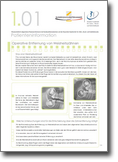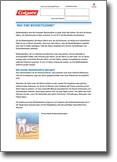Wisdom tooth removal
The wisdom teeth belong to the molars (technical term: molars). They are also called the third molars or 8-teeth. As a rule, they do not break through until after the age of 16. However, this cannot be predicted. Some wisdom teeth are fully formed, but never break through, others take until the age of 40 until they show up. Normally, a person has four wisdom teeth, but sometimes wisdom teeth are not created at all. Interesting:
Did they know that the name wisdom tooth comes from the view that in old age, when the wisdom tooth breaks through, man already has a certain "wisdom" or wisdom? Has it reached understanding? In other cultures, the naming is quite different: In Indonesia, for example, one speaks of the "youngest tooth" or in Thailand of the "crouching tooth". In evolutionary history, wisdom teeth date back to the time when we ate only raw food and it had to be crushed well. When we discovered fire and food became softer and softer with the invention of cooking, the lower jaw regressed greatly over time. In today's humans, wisdom teeth are therefore to be regarded as a remnant from prehistoric times. Problems with wisdom teethSince the wisdom teeth are the last to break through, they have the least space in the jaw of all teeth. This can cause several problems: On the one hand, the wisdom tooth sometimes does not break through completely. The tooth then remains covered with gums in places. At the gum edges and under the gums, there are then ideal conditions for bacteria, which can then lead to inflammation of the gums. On the other hand, it can happen that some wisdom teeth grow only on one side in the upper or lower jaw. In this case, they lack the natural "antagonist". As a result, they grow beyond the chewing plane and can bump into the opposite jaw. This resulting "sliding obstacle" can lead to tooth damage, nocturnal teeth grinding (technical term bruxism) or temporomandibular joint complaints. Another problem can arise because some wisdom teeth do not grow straight upwards, but more or less horizontally forward. They then grow into the adjacent molar and thus exert pressure on the entire dental arch. Conservative (wisdom tooth preservation) treatment:If the cause of complaints on the wisdom tooth is "only" due to inflammation, it can be tried to bring it to a standstill with anti-inflammatory drugs. Procedure of wisdom tooth surgeryThe mucous membrane on the jaw in the area of the remaining wisdom tooth is separated and lifted off. The bone above the tooth is drilled open and the tooth is taken out by means of pliers or other instruments. Sometimes the tooth is crushed into individual parts beforehand in order to be able to remove it better from the bone cavity. |
||||||||||||
further information about wisdom tooth removal
|
||||||||||||



